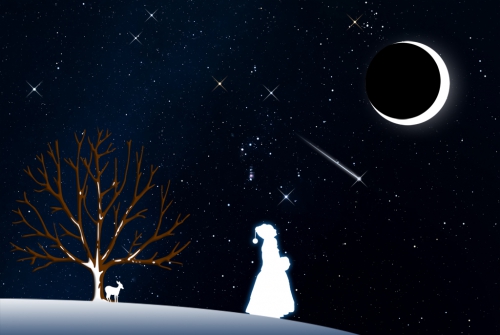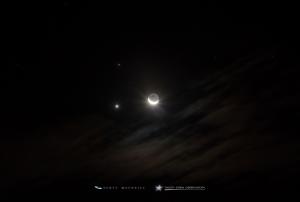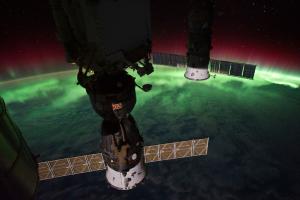
Stargazing Nights
- Where:
- Frosty Drew Observatory
- When:
- Friday March 22, 2019 at 7:00 pm - 9:00 pm
- Cost:
- $5 Suggested Donation per person 5 years and older
Tonight is Stargazing Night at Frosty Drew Observatory, and for the second week consecutively - rain, clouds, and wind have arrived just in time to crash our geek out. Rain will be periodic and potentially quite light, which will certainly keep our telescopes closed. Considering that the Full Worm Moon occurred on Wednesday night, we would have had quite a bright 96% waning gibbous Moon rising at 9:10 pm. So no dark skies tonight regardless.
We will open the Observatory and Sky Theatre from 7:00 pm – 9:00 pm. In the Sky Theatre we will show images captured during the total lunar eclipse at Frosty Drew Observatory, alongside images that we captured of Comet 46P/Wirtanen, and other celestial objects photographed at Frosty Drew Observatory. We will host a commentary for the images and an open discussion on general astronomy. The Observatory will be open for tours of our equipment and operations, with the lights on.
Overall, tonight is certainly not the night to make the long drive. Rain showers, wind, and clouds will keep the observatory telescopes closed. We could see a few thin openings in the clouds, though too infrequent to catch a view. If you want to catch up on some of the amazing things happening in astronomy, check out our telescopes and gear, or just want to relax with ambient tunes and awesome celestial photos, then stop in and chat with our astronomers about clearer nights and starry skies.
-------------------------------------
Weekly Happenings
Scott MacNeill
This coming Wednesday, March 27, 2019, the third quarter Moon will be in conjunction with Jupiter during the morning hours, with early morning risers catching a beautiful view before sunrise kicks in. Rising off the ESE horizon just after 1:30 am, Jupiter and the Moon will appear about 3.2° apart. Though around 5:00 am, the pair will be high in the SSE sky. If setting out before sunrise take a moment and look up at the Moon and catch Jupiter hanging out about 3° to the right (west).
This past Wednesday, March 20, 2019 (Vernal Equinox), the International Space Station (ISS) returned to the evening sky over the US, with daily passes rocking our view. The first notable pass happened last night (Thursday, March 21), but clouds moved in just in time to hammer our view. Though passes will continue, nightly, for the next three weeks. Here are a few notable passes happening over the next several nights:
Fri, Mar 22 at 8:48 pm, starting in the WSW, rising to 47°, heading towards the N, and into Earth’s shadow.
Sat, Mar 23 at 7:57 pm, starting in the SW, rising to overhead, heading towards the NE. ← Awesome pass!
Sun, Mar 24 at 8:43 pm, starting in the W, rising to 25°, heading towards the NNE, and into Earth’s shadow.
Mon, Mar 25 at 7:51 pm, starting in the W, rising to 37°, heading towards the NE.
Wed, Mar 27 at 7:46 pm, starting in the WNW, rising to 22°, heading towards the NE.
These times apply to Southern New England and are generally applicable to the Northeast. For daily pass times for these regions, visit the Frosty Drew Observatory page. For pass times specific to your location, visit NASAs Spot the Station. The ISS is easily visible to the naked eye, all you need is clear(er) skies.
On Friday, March 29, 2019, another stunning lunar conjunction will take place, this time involving Saturn. During the morning hours, starting around 3:30 am, Saturn and the 38% waning crescent Moon will rise over the SE horizon, appearing only 2° apart. For early risers, and commuters before sunrise, you can catch a fabulous view of the conjunction about 20° over the SSE around 5:30 am. Though Saturn is dimmer than Jupiter, we think this conjunction will be the better of the two this week, due to the closer visible proximity as well as the crescent phase of the Moon, which will show earthshine, which is when the night side of the Moon is dimly illuminated and visible due to sunlight reflecting off Earth.
So welcome new spring days with the ISS and a lunar dance with the bright planets.



